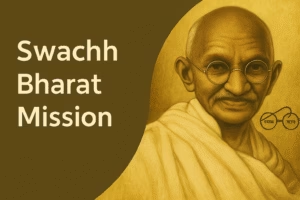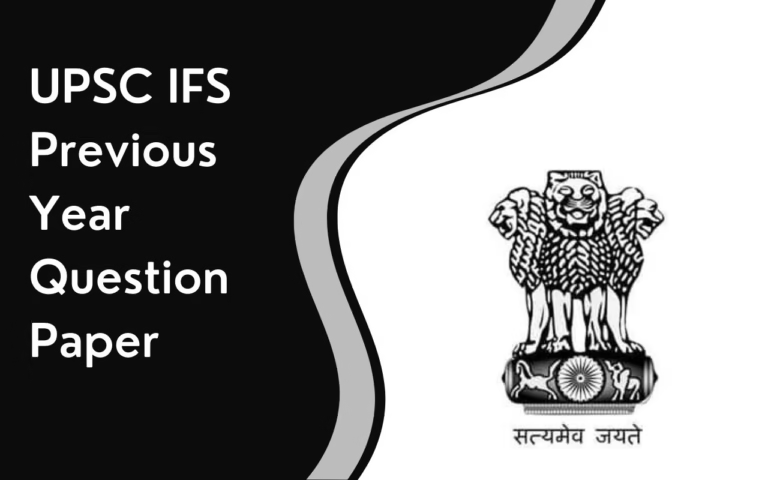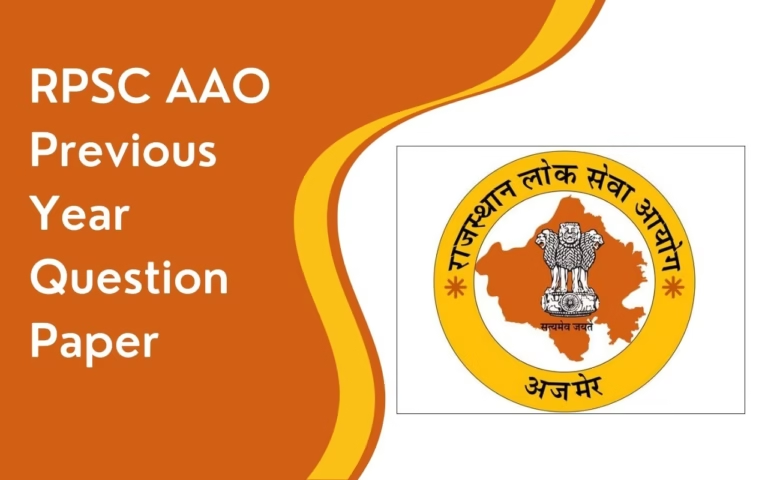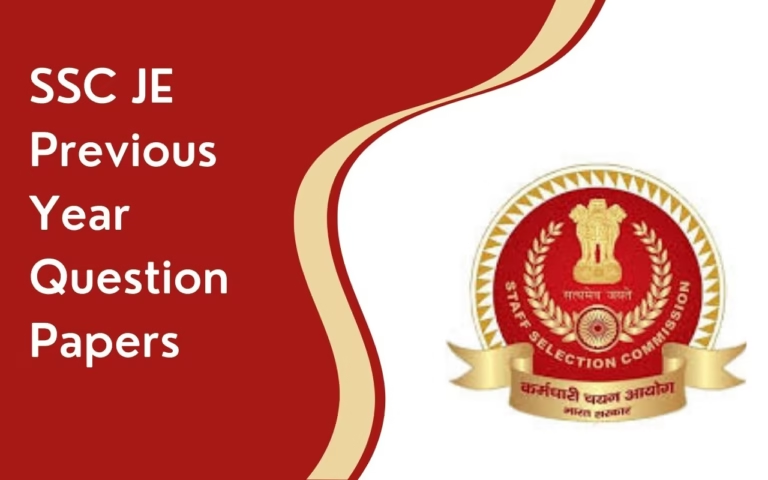The Swachh Bharat Mission, also known as Swachh Bharat Abhiyan or the Clean India Mission, was launched on October 2, 2014, to improve sanitation and hygiene across India.
The mission focuses on eliminating open defecation and ensuring universal sanitation coverage. It set a target to achieve a cleaner and healthier India by 2019, as a tribute to the 150th birth anniversary of Mahatma Gandhi, who believed that cleanliness is essential for a healthy and prosperous nation.
Objectives and Importance Of Swachh Bharat Mission
The Swachh Bharat Mission (SBM) aims to create a cleaner, healthier, and more sustainable India by addressing the critical issues of sanitation and waste management. Its primary goals include:
Key Goals of the Mission
- End Open Defecation by building household, community, and public toilets.
- Ensure Safe Sanitation Access for every household and public place.
- Promote Scientific Waste Management through recycling and proper disposal systems.
How It Improves Health and Nature
- Control the Spread of Diseases caused by poor hygiene and open defecation.
- Protect Water Sources from contamination and pollution.
- Enhance Quality of Life with cleaner surroundings.
- Reduce Environmental Pollution through effective waste handling.
Why Rural and Urban India Need SBM
- Rural Areas: Addressed the lack of basic toilet infrastructure and open defecation issues.
- Urban Areas: Improved waste management and sanitation in slum areas.
- Overall Impact:
- Better public health outcomes.
- Greater safety and dignity, especially for women.
- Cleaner public spaces and communities.
Components of Swachh Bharat Mission
The Swachh Bharat Mission is divided into two main components, each designed to address the unique sanitation and cleanliness challenges of urban and rural India. Together, they aim to achieve the vision of a “Clean India.”
1. Swachh Bharat Mission (Urban): SBM-Urban
SBM-Urban focuses on improving cleanliness and sanitation in cities and towns by eliminating open defecation, upgrading waste management systems, and creating cleaner urban spaces.
Features of SBM-Urban
- Construction of Toilets: Promotes and funds individual household toilets, public toilets, and community toilets for urban populations.Over 70 lakh (7 million) household, community, and public toilets have been built across cities and towns, ensuring almost 100% access to sanitation.
- Scientific Waste Management: Encourages segregation, door-to-door collection, transportation, and processing of solid waste to reduce landfill dependency.
- Open Defecation Free (ODF) Certification: Works to ensure every urban area has sufficient sanitation facilities and sustains ODF status.Urban India was declared Open Defecation Free (ODF) by 2019. As of 2025, 3,300+ cities are ODF+ and 960+ cities are ODF++, showcasing improved and sustained sanitation efforts.
- Awareness Campaigns: Conducts large-scale drives to change public behavior towards hygiene and waste disposal.
Impact of SBM-Urban
This initiative has resulted in numerous cities and towns achieving ODF status and has significantly strengthened urban waste management infrastructure.
2. Swachh Bharat Mission (Gramin): SBM-Gramin
SBM-Gramin aims to make rural India open defecation free by focusing on community-driven sanitation practices and sustainable cleanliness solutions.
Features of SBM-Gramin
- Household Toilets: Provides financial support and incentives for building toilets in rural households to eliminate open defecation.Over 10 crore (100 million) individual household toilets were built during Phase I (2014–2019), increasing rural sanitation coverage from 39% in 2014 to 100% in 2019.
- ODF Villages: By October 2, 2019, all villages in India were declared Open Defecation Free (ODF), marking one of the world’s largest behavioral change movements.
- Community Mobilization: Encourages participation through cleanliness drives, Swachhagrahis (village volunteers), and village-level sanitation committees.
- Capacity Building: Trains villagers and officials in hygiene practices, toilet upkeep, and waste management.
- Solid and Liquid Waste Management: Introduces village-level systems for waste treatment and disposal.5,03,585 villages have established solid waste management systems and 5,22,462 villages now have proper liquid waste management facilities.
Impact of SBM-Gramin
SBM-Gramin has enabled millions of rural households to build toilets, drastically reducing open defecation and improving rural sanitation standards.
Major Campaigns Under Swachh Bharat Mission
To keep the momentum of cleanliness and sanitation alive, the Swachh Bharat Mission (SBM) has rolled out several impactful campaigns that encourage citizen participation, hygiene awareness, and sustainable waste management.
1. Swachhata Hi Seva (SHS) Campaign
Launched annually since 2017, Swachhata Hi Seva promotes volunteerism and collective action for cleanliness.
2024 Edition (Sept 17 – Oct 2): Focused on three key pillars:
- Revitalizing neglected or high-risk areas through “Cleanliness Target Units.”
- Boosting public participation in large-scale cleanliness drives.
- Improving sanitation workers’ welfare and dignity.
The campaign concludes with Swachh Bharat Diwas on October 2, marking the anniversary of the mission through nation-wide street, park, and waterway cleaning drives.
2. Clean Toilets Campaign
Launched on World Toilet Day (Nov 19, 2021), this campaign spreads awareness on the importance of maintaining clean and functional toilets in both public and private spaces, encouraging hygienic sanitation practices.
3. Safai Apnao, Bimaari Bhagao
This initiative emphasizes safe waste handling practices for both citizens and sanitation workers. Its aim is to reduce health hazards and diseases caused by poor sanitation and unscientific waste disposal.
4. Swachhata Green Leaf Rating
A unique SBM-Gramin initiative that awards a “Green Leaf” rating to villages and institutions maintaining high cleanliness standards. This drives behavioral change and healthy competition at the grassroots level.
5. World Environment Day Cleanliness Campaigns
Organized to link cleanliness with environmental protection, these drives promote plastic waste reduction, recycling, and sustainable waste management in alignment with global environmental goals.
6. Garbage-Free Cities Drives
In urban areas, focused campaigns promote:
- Segregation of waste at source.
- Door-to-door waste collection and scientific disposal.
- Encouraging cities to compete for cleaner rankings through Swachh Survekshan surveys.
Impact of These Campaigns
These campaigns blend citizen awareness, technology-driven monitoring, and sanitation worker welfare to ensure cleanliness becomes a habitual and collective effort. They have significantly contributed to the success and sustainability of the Swachh Bharat Mission.
Swachh Bharat Mission 2.0: Building a Cleaner and Sustainable India
Swachh Bharat Mission 2.0 (SBM 2.0), launched on October 1, 2021, builds on the success of Phase I (2014–2019). It focuses on sustaining Open Defecation Free (ODF) status, managing solid and liquid waste, and creating garbage-free cities and villages by 2025–26.
Objectives of Swachh Bharat Mission 2.0 (SBM 2.0)
- Sustain ODF status and promote long-term sanitation habits.
- Scientific solid and liquid waste management across rural and urban areas.
- Achieve 3-star Garbage Free certification for all cities.
- Encourage recycling, composting, and wastewater treatment.
SBM-Gramin Phase II (Rural)
- Transform villages from ODF to ODF Plus/ODF++ with proper waste disposal.
- Focus on waste segregation, composting, water reuse, and community participation.
- Funded with over ₹1.4 lakh crore to improve rural sanitation infrastructure.
SBM-Urban 2.0 (Urban)
- Build 3.5 lakh new toilets and ensure 100% access to sanitation.
- Remediate legacy dumpsites and adopt waste-to-wealth initiatives.
- Over 3,300 cities certified ODF+ and 960 cities ODF++.
- Budget of ₹1.41 lakh crore for 2021–26 with digital monitoring for transparency.
SBM 2.0 moves beyond toilet construction to sustainable cleanliness and waste management. It addresses challenges of growing waste, protects the environment, and improves public health.
Also Read: Pradhan Mantri Jan Dhan Yojana
Conclusion
The Swachh Bharat Mission has transformed India’s approach to sanitation, hygiene, and waste management. From constructing over 10 crore toilets to declaring all villages and cities open defecation free, the mission has driven one of the largest behavioral change movements in the world.
With Swachh Bharat Mission 2.0, the focus now shifts to sustaining these gains through scientific waste management, recycling, and creating garbage-free cities and villages by 2025–26. This initiative not only improves public health but also ensures a cleaner, greener, and healthier India for future generations.
Who launched the Swachh Bharat Mission and when?
The Swachh Bharat Mission was launched by Prime Minister Narendra Modi on October 2, 2014, coinciding with Gandhi Jayanti, as a tribute to Mahatma Gandhi’s vision of a clean India.
Which Ministry initiated the Swachh Bharat Mission?
The mission was initiated under the Ministry of Drinking Water and Sanitation, with the Secretary of the ministry acting as the Mission Coordinator.
What is the phase 2 of Swachh Bharat Mission?
Swachh Bharat Mission 2.0 (SBM 2.0) was launched on October 1, 2021. Key focuses of SBM 2.0 include: Sustaining Open Defecation Free (ODF) status. Promoting scientific solid and liquid waste management. Achieving garbage-free cities and villages. Upgrading sanitation infrastructure in both urban and rural India by 2025–26.
What is the difference between ODF and ODF ++?
ODF (Open Defecation Free): A status where no individual or household practices open defecation, and every household has access to functional toilets. ODF++: A higher sanitation benchmark that ensures safe faecal sludge management, wastewater treatment, and scientific disposal of sewage, ensuring long-term sustainability.
What are the key campaigns under the Swachh Bharat Mission?
Some notable campaigns include Swachhata Hi Seva, Clean Toilets Campaign, Safai Apnao Bimaari Bhagao, Swachhata Green Leaf Rating, World Environment Day Cleanliness Campaigns, and Garbage-Free Cities Drives. These initiatives encourage citizen participation, hygiene awareness, and sustainable waste management.




